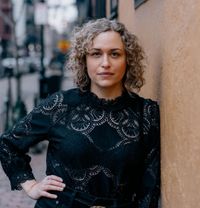How Do the Oscars Work? Here's Your Step-by-Step Primer
It's...incredibly complicated.


Going into the 2019 Academy Awards this weekend, a question might pop into your head all of a sudden: Wait, how does this all Oscars stuff work again? I feel like every time I watch the ceremony (so, once a year), I have to refresh my memory about what's going on with this "voting" situation. So! I made this handy primer for you to refer back to, this year and all the years ahead that you might watch the year's biggest movie award ceremony. Enjoy!
The Nomination Process
This part is the most complex. There are 24 available categories, and roughly 6,000 Academy members who typically belong to a "branch" of the industry. An example: Gwyneth Paltrow came on to the scene as an actor, so that's her branch. Each member can only be in one branch—actor, film editor, etc.—and can mostly only vote for other people also in that specialty (e.g. other actors, other film editors), per the Academy's website. The exception is the Best Picture category.
Once a film is eligible for nomination—meaning it's been shown in an L.A. movie theater for a week, and is more then 40 minutes long (except for Short Film)—members select their top five picks and are told to "follow their hearts," per People. I feel like that could be interpreted a lot of ways but, okay.
The Selection
Also complicated! Basically, there's a formula that spits out a number that is the bare minimum requirement for a nominee to be selected. Below is the exact math, if you're curious, according to People.
"The magic number is calculated by taking the total number of ballots received for that category and dividing them by the number of possible nominees plus one, and then rounding it up to the nearest whole number."
Okay, then. Moving on: Once a candidate gets to that special number, the remaining ballots are redistributed in favor of the second name on the ballot. So once one person or film has enough nominations, that name is no longer counted and the people who are counting move on to the next name on a voter's top five list and begin the process over (this is called redistributed votes). This repeats itself until there are five nominees per category. Phew.
The Final Process
I could probably write a whole book about how the voting process used to work. Fun fact: Up until 1950, if one nominee came within three votes of the winner, he or she ALSO won. These days, the process is simpler. Each Academy member gets to vote in each category, only once, submitting the full ballot to the Academy within a certain timeframe and sworn to secrecy. Then, the votes are tallied up, and whoever has the most wins. Simple!
Get exclusive access to fashion and beauty trends, hot-off-the-press celebrity news, and more.
From beginning to end, accounting firm PriceWaterhouseCoopers spends seven days counting the votes—each one is counted by hand, and the Oscars for most of its history has used paper ballots (although that's being phased out).
So, in conclusion, the whole thing is a process. AND on top of all that, even with all that prep work and secrecy, sometimes a tie can happen, or a mistake in handing out the wrong envelope. Just in case you need a reminder of the Moonlight/La La Land situation in 2017:
The 2019 Oscars have already been dramatic as is. We don't need another one of these—expected voting surprises only, please.
For more stories like this, including celebrity news, beauty and fashion advice, savvy political commentary, and fascinating features, sign up for the Marie Claire newsletter.
RELATED STORIES



Katherine’s a contributing syndications editor at Marie Claire who covers fashion, culture, and lifestyle. In her role, she writes stories that are syndicated by MSN and other outlets. She’s been a full-time freelancer for over a decade and has had roles with Cosmopolitan (where she covered lifestyle, culture, and fashion SEO content) and Bustle (where she was their movies and culture writer). She has bylines in New York Times, Parents, InStyle, Refinery29, and elsewhere. Her work has also been syndicated by ELLE, Harper’s Bazaar, Seventeen, Good Housekeeping, and Women’s Health, among others. In addition to her stories reaching millions of readers, content she's written and edited has qualified for a Bell Ringer Award and received a Communicator Award.
Katherine has a BA in English and art history from the University of Notre Dame and an MA in art business from the Sotheby's Institute of Art (with a focus on marketing/communications). She covers a wide breadth of topics: she's written about how to find the very best petite jeans, how sustainable travel has found its footing on Instagram, and what it's like to be a professional advice-giver in the modern world. Her personal essays have run the gamut from learning to dress as a queer woman to navigating food allergies as a mom. She also has deep knowledge of SEO/EATT, affiliate revenue, commerce, and social media; she regularly edits the work of other writers. She speaks at writing-related events and podcasts about freelancing and journalism, mentors students and other new writers, and consults on coursework. Currently, Katherine lives in Boston with her husband and two kids, and you can follow her on Instagram. If you're wondering about her last name, it’s “I go to dinner,” not “Her huge ego,” but she responds to both.
